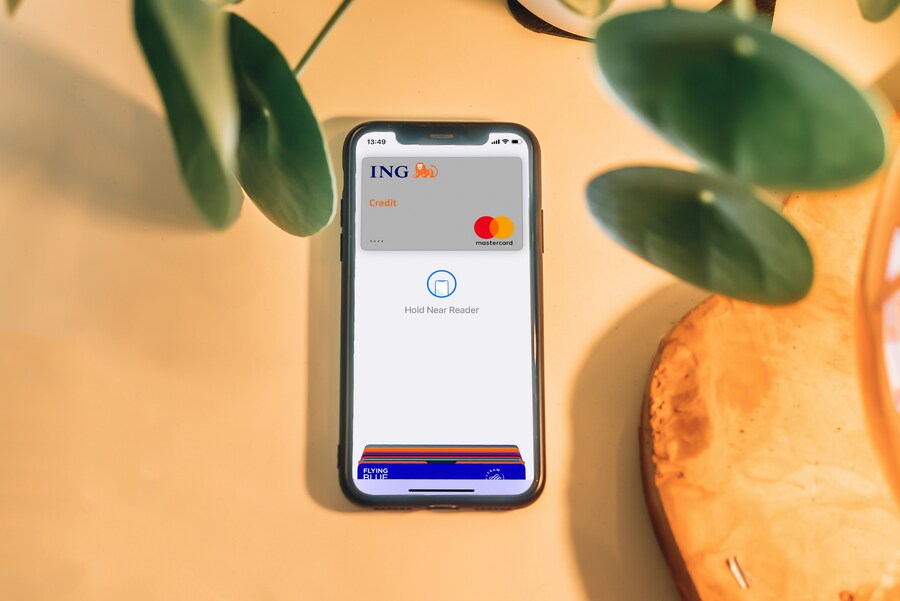What is API (Application Programming Interface) Banking and How Does it Work?
APIs act as go-betweens. They let different apps communicate and interact. In banking, APIs enable seamless datasharing. They link banks, fintech companies, and other third parties. These services include real-time payments, account aggregation, and personalized financial insights for customers. Banking as a service is also an integral part of this offering. By using APIs, banks can improve customer experience. They can do this by providing fastertransactions. They can also offer tailored financialproducts. It lets businesses customize their banking solutions to their needs. This flexibility creates new opportunities. It allows traditional banks to collaborate with agilefintechstartups.
Understanding the Basics of API in Banking
API, or Application Programming Interface, is the backbone of modern banking innovation. It is a bridge between software apps. It allows seamless communication and data exchange.
In banking, APIs let banks connect with third-party developers and fintech companies. They also let financial institutions do the same. They use this to offer new services and features to customers. Understanding the basics of API in banking means grasping how the interfaces allow secure access. They enable access to customer data. They also streamlinetransactions and improve user experience.
By using APIs, banks can add many features to their systems. They can do this without having to build the features from scratch. They enable real-time info sharing between different platforms in finance. This leads to better efficiency, flexibility, and agility. It helps deliver new solutions for businesses and consumers.
The Role of Open Banking and APIs in Modern Financial Services
Open banking and APIs have changed traditional finance. They do so by promoting transparency, innovation, and collaboration. Today, in the digital age, open banking lets customers share their financial data with third parties through APIs. This allows for personalized offerings.
They include budgeting tools and investment advice tailored to individual needs. APIs are crucial. They help different financial institutions talk to fintech companies. By using APIs, businesses can access many services. They can do so without having to build API from scratch. This creates competition. It drives the development of new products that meet changing customer demands. Open banking and APIs have been combined. They have paved the way for better customer experiences.
They enable real-time payments, personalized recommendations, and account aggregation across multipleplatforms. Technology advances fast. Open banking principles and API-driven innovations are key. They will keep shaping modern financial services.
How Banks and Fintechs Integrate APIs for Enhanced Banking Services
Fintech and banking companies are embracing the power of APIs, which allow companies build products around banking services. They can use API to connect systems and platforms. This makes for a better customer experience. This integration allows data to be shared in real time. It enables faster transactions and personalized services tailored to individual needs. Banks can offer innovative solutions through API integration. These include advanced payment processing, account aggregation, and risk tools. Fintechs use API to improve their digital offerings. They tap into the existing infrastructure of traditional banks.
But, they also add cutting-edge tech like artificialintelligence and blockchain. Banks and fintechs collaborate through APIs. This opens up endless possibilities for creating new products and services. These will cater to the evolving demands of consumers in today's digital age. It's a symbioticrelationship. It drives innovation and moves the financial industry towards a more linked future.

The Benefits of API Banking for Business Banking and Financial Institutions
API offers a multitude of benefits for both businesses and institutions. One key advantage is the ability to streamline operations. This happens by automating processes with smooth data exchange. It shows the benefits of using APIs for cost savings and higher productivity. API enables real-time access to financial information and services. It allows for faster decisions and better customer experiences. Businesses can use available API to offer new products and services. They tailor them to meet their clients' evolving needs. It lets them adapt quickly to market demands and rules. It opens the door to new revenue and business opportunities. This is in today's digital economy. It helps businesses stay competitive in finance, which is always changing.
Streamlining Operations: The Advantages of Using APIs
In today's fast-paced business environment, efficiency is key. The use of APIs can also streamline operations. APIs also enable real-time access to critical data and banking functions. They do this by seamlessly combining various systems and business processes. Gone are the days of manual tasks and cumbersome paperwork.
This frees up valuable time for employees to focus on more strategic initiatives. This not only boosts productivity. It also cuts the risk of human error. Information flows easily between platforms.
This agility lets banks adapt fast to market changes and customer demands. It helps them stay ahead of the competition in a changing industry. It gives a competitive edge by promoting innovation and driving excellence.
APIs in Banking: Facilitating Better Financial Integration and Collaboration
APIs in digital banking are pivotal. They help systems and platforms integrate and collaborate seamlessly. APIs allow banks and fintech companies to securely share data and tools.
Real-time access to important information, including:
Account balances
Transaction history
Customer profiles
Enhanced connection speeds up internal processes in financial firms.
More personalized services offered to customers, including:
Instant payments
Automated loan approvals
Customized investment strategies
APIs connect financial ecosystems, promoting more collaboration among industry players.
This creates a dynamic environment. In it, banks, fintech startups, payment providers, and others can partner. They can do so to drive innovation. This is for the benefit of end-users.
How API Banking is Driving Innovation in Financial Services
API is changing finance. It drives innovation and fosters collaboration. It brings together traditional banks and fintech companies. This leads to better customer experiences and smoother operations. It allows for faster development of new banking solutions. These include personalized financial tools and automated payment systems.
This innovation improves efficiency. It also opens up opportunities for more market reach and revenue growth. API paves the way for seamless data sharing between platforms. It lets different systems work together. This helps banks adapt to changing consumer demands and market trends.
This agility fosters a culture of continuous improvement in the industry. It promotes competitiveness and drives more innovation in financial services.

Examples of API in Action: Use Cases and Success Stories
API has changed how banks interact, both with their customers and with bank partners. They use APIs to make online transactions safe and fast. This will make customers happier. Some examples of APIs in action include fintech companies providing account aggregation services. Through APIs, these platforms aggregate financial data from many sources. This gives users a complete view of their finances in one place. This convenience empowers people. They can make better money choices using real-time insights. They cater to individual investment goals and risk profiles. These services are tailored. They use data analytics and machine learning to give custom investment recommendations. They help clients meet their financial goals well. It is a game-changer in how we manage our finances now and in the future.
Revolutionizing Payment Transfers and Online Banking Through API Integration
It has revolutionized payment transfers and online banking. It has been a game-changer in finance. With APIs, transferring money between accounts has become faster and more secure. They also make online payments easier via APIs. The days of waiting for transactions to process are gone.
API integrate allows for real-time payments. It lets businesses and people manage their finances well. The ease of starting payments from phones or websites has changed how we handle our finances. It's used for splitting bills with friends or paying vendors instantly. API integrate makes these transactions easy.
The improved security measures use an API. They ensure that they protect sensitive financial information during each transaction. This encryption level gives users peace of mind. They use it for online and specific banking. They drive innovation in finance. They offer users a seamless way to manage their money.
How APIs are Enhancing Mobile Banking Apps and Banking Software
Mobile banking apps and software have changed the way we manage our finances. A banking API is a type of software. We now do so on-the-go. The platforms are powerful and efficient. Banking APIs allow systems to communicate seamlessly. They use them to give users personalized experiences. The experiences are tailored to their needs and preferences.
This customization level boosts user engagement and happiness. It also leads to more loyalty towards the app or bank. Also, APIs allow banking apps to securely access external data. This data includes things like transaction histories, account balances, and credit scores. It includes Goldman Sachs Bank USA and Evolve Bank. This ensures that users have current information easily.
It does not compromise security or privacy. APIs in mobile apps are changing how we use our finances on digital platforms. It's paving the way for a simpler, user-friendly experience. It meets the changing needs of modern consumers.
API Use Cases: From Improving User Experience to Enabling Banking-as-a-Service
APIs play a crucial role in enhancing user experience within the banking sector. These services are personalized to their needs and preferences. Banks can also use APIs integrate to enable Banking-as-a-Service (BaaS) models. These models allow third party developers to make new financial products and services.
Teamwork fosters creativity and drives industry competition.
Benefits to consumers include more options for managing their finances.
APIs help share banking data securely between systems and apps.
Faster processes enabled by successful API include:
Account aggregation
Payment transfers
Identity verification
Interoperability simplifies complex tasks for both businesses and individual users.
APIs are versatile.
They improve user experience and enable BaaS. They are changing how we interact with financial services. Technology continues to advance. We can expect even more innovative API uses.
Understanding the Different Types of Banking APIs and Their Functions
When it comes to APIs, there are various types that serve different functions. Core APIs focus on essential banking operations like account management and transactions. These APIs ensure the smooth functioning of day-to-day banking activities. This fosters innovation. It allows for new financial products and services to develop. Payment initiation APIs facilitate direct payments. They go from one account to another in real-time. The APIs can provide access to account information. This includes details like balances and transaction history.
They empower customers by giving them better financial insights. These APIs play a crucial role. They verify user identities securely. This adds security to banking applications.
Core Banking APIs vs. Open Banking API: A Comparative Analysis
Understanding the difference is key. This is crucial for banks. They connect internet banking modules within a bank's system. They focus on streamlining operations and enhancing efficiency within the organization. They help banks, other financial firms, and third-party providers talk to each other. The interfaces are external.
They enable data sharing and collaboration across platforms. This sharing and collaboration promotes innovation in the industry. Open APIs foster partnerships with outsiders and customer-focused solutions. Both types of APIs have distinct roles. They modernize financial services. They offer benefits to banks, fintechs, and consumers.
How API Banking for Banks Transforms the Customer Experience
Digital and mobile APIs have transformed financial services. These APIs have changed how customers interact with their finances. They offer seamless integration and real-time access to banking. Gone are the days of waiting in long queues at brick-and-mortar banks. Financial institutions can also make monetize from their APIs. They can create new revenue streams and improve their services.
They can also manage their users bank account with just a few taps on their smartphones. Banks use these APIs to improve customer experience. They offer personalized services tailored to individual needs. This customization has increased customer loyalty. It has also raised bank retention rates. These include budgeting tools, investment platforms, and peer-to-peer payment solutions.
Technology is advancing rapidly. The possibilities for improving financial services through APIs are endless.
Exclusive vs. Third-party Developer APIs: Accessibility and Security Considerations
When considering APIs for your services, it's crucial to tell apart exclusive APIs from third-party ones. They offer more control over security and customization. Third-party developer APIs provide access to many external functions. But, they may raise concerns about data privacy and compliance.
Exclusive APIs ensure high security because they are managed internally. But, they might limit innovation compared to using third-party solutions. Third-party developer APIs offer flexibility and scalability. But, they require thorough vetting to ensure they meet strict security standards. Balancing security with accessibility is key. This is true when choosing between these two types of APIs.
But, they must also weigh the risks of integrating external developers into their systems. Finding balance is key. It's essential for a strong API strategy. It should improve user banking experience and data protection.

How to Successfully Implement API Banking in Your Financial Strategy
So, you're ready to take the leap and implement API into your financial strategy. It's a smart move that can revolutionize the way you do business. First things first, ensure you have a clear understanding of your goals and objectives. Identify how API can help you achieve them efficiently. Next, work closely with your ITteam or third party developers. Integrate the APIs into your existing systems. Communication is key in this process. Testing is crucial before fully launching API services. Conduct thorough tests to iron out any potential issues and ensure smooth functionality.
Remember, security is paramount when it comes to implementing APIs in banking. Stay updated on cybersecurity measures and adhere strictly to regulations. Stay agile and adaptable as technology evolves rapidly.
Steps for Integrating APIs into Existing Banking Platforms
Integrating APIs into existing platforms requires careful planning and seamless execution. First, find the goals and objectives you aim to achieve. Do this through API integration. Next, assess your current systems and infrastructure. Do this to see if they work with APIs. Work closely with your IT team. Prioritize security.
Do this by using strong authentication and encryption. These will protect sensitive financial data. Look for any bugs or issues that may arise during implementation. Train your staff on how to use the new API features well. This will boost efficiency and productivity in your organization.
Best Practices for Financial Institutions and Fintechs Using API
When using API, financial firms and fintech companies must follow best practices. These practices ensure smooth the best results. One key practice is clear communication. It must be kept between all parties in the API process. Transparency is crucial for successful collaboration. Another key practice is testing APIs thoroughly.
Do this before fully adding them to banking systems. Testing helps find issues and bugs. They could hurt the APIs once deployed. We must monitor and evaluate performance. This is key to track the effectiveness of API usage. Keeping data secure and following rules should be toppriorities. This is true for both financial institutions and fintechs. Having strong security and following industry standards can lower the risks. The risks are from databreaches or non-compliance.
It's essential to consider alternative to GitHub for code management and collaboration within the financial services industry. While GitHub is a popular platform, its open-source nature might raise concerns about data security and compliance for financial institutions.
Fostering a culture of continual learning in organizations. Embracing innovation and seeking user feedback can drive improvements in bankservices. They are powered by APIs.
Addressing Challenges and Security Concerns in API Integration
Addressing challenges and security concerns is crucial for bank API integration. It ensures the safety and reliability of financial transactions. One main challenge is data privacy. Sensitive information must be protected from unauthorized access. Another concern is cybersecuritythreats.
These include hacking and phishing attacks. They can harm the banking system. Implementing robust authentication methods and encryption protocols can help mitigate these risks. Following rules like GDPR and PSD2adds complexity to API. It is another layer of requirements. Business institutions must ensure they adhere to these standards to avoid legal repercussions.
You must monitor constantly and audit regularly. These practices are essential to quickly find any system vulnerabilities. By staying watchful and proactive, banks can address these challenges. This will enhance trust among their customers and keep a secure environment for transactions.
The Future of Banking: Predictions and Trends in API Banking
As we look ahead to the future of banking, one thing is certain: API architecture will continue to play a pivotal role in shaping the banking industry. Technology is advancing rapidly. Consumer expectations are changing. Predictions say API will change how banks and fintech companies work together. It will lead to better services and improved customer experiences. The trend is towards open banking and more data sharing. This trend will drive innovation and create new growth opportunities. More businesses embrace digital transformation. This shift is toward interconnected ecosystems.
They are powered by APIs. They will enable more efficiency, flexibility, and customization in banking service. This will cover cybersecurity and regulatory compliance. The goal is to ensure safe and secure data transmission. Embracing these trends will be key. It's needed to stay relevant in the ever-changing modern finance world.
How APIs are Shaping the Next Generation of Banking and Financial Services
We are moving to a more digital world. APIs are crucial in shaping the next generation of banking and finance. Each type of APIplays a significant role in this transformation. They are revolutionizing how banks interact with customers. They make transactions seamless and efficient. APIs enable real-time data sharing between different systems.
Empower financial institutions to offer personalized services tailored to individual needs.
Open banking initiatives are rising.
More APIs available now. They are creating new chances for collaboration. The collaboration is between traditional banks and fintech companies.
This team approach is driving innovation in areas such as:
Banking and payment processing
Lending
Risk management
APIs are flexible and scalable. But, banks also need strong know your customer (KYC) processes. These processes securely onboard new users in mobile banking apps and online platforms. As a result, customers can enjoy better user experiences that are both convenient and safe. They are changing how financial services are delivered to people worldwide. They streamline paymenttransfers and boostsecurity. They keep pushing boundaries by improving efficiency in the industry. We are in a time of tech advancement. APIs will be at the forefront. They will drive change in banking for years.
The Evolving Landscape of APIs: From Fintech Collaboration to Open Banking Expansion
APIs are changing. The ability to smoothly connect systems through API calls is paving the way for exciting collaborations. These are between traditional financial institutions and innovative fintech companies. This synergy is driving smartsolutions. They cater to the changing needs of today's digital consumers. It lets services integrate easily. It creates a wider range of offerings for customers.
Open banking expansion adds to this trend. It fosters more transparency, competition, and consumer choice in finance. It enhances their global banking capabilities and nurtures a more connected ecosystem. In this ecosystem, data can be shared and used to give users personalized experiences.
Anticipating Regulatory Changes and Technological Advancements in Banking API
As we look to the future of banking, one thing is certain. It's key for staying ahead in this fast-changing landscape. The industry is set for huge growth and innovation. This is because it has embraced openbanking. It used the power of APIs and fostered collaboration between banks and fintechs. As we navigate these changes, businesses must adapt.
It focuses on:
Enhancing customer experiences
Streamlining operations
Driving innovation
Ensuring strong security.
By watching regulations and using new tech. Financial institutions can lead in this newdigitalera. The journey has just begun. It is towards a more connected, efficient, and customer-focused banking system. Exciting possibilities await those who embrace change and use this transformative technology.

